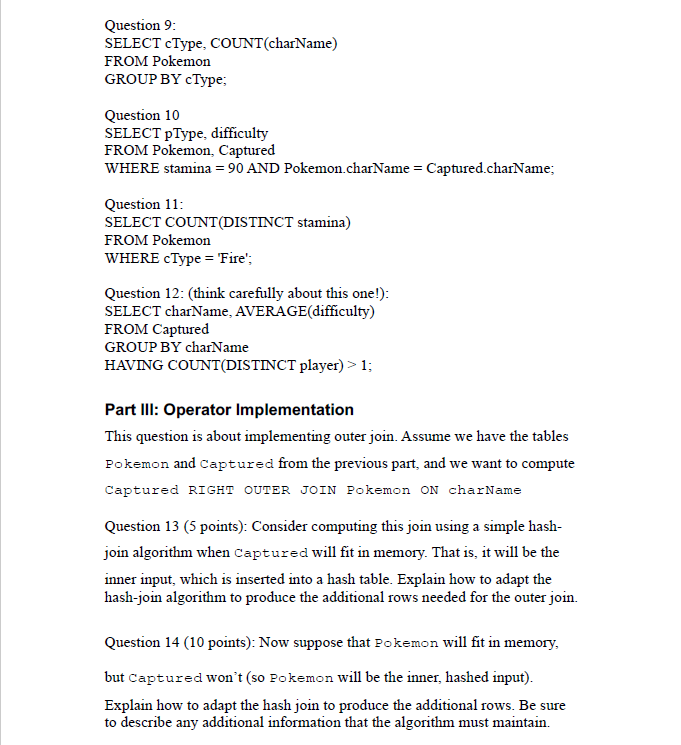Question
Disk Access Consider a hard disk with the following characteristics: Average seek time: 5ms Average rotational delay: 3ms Page transfer time: 0.04ms Assume the disk
Disk Access Consider a hard disk with the following characteristics: Average seek time: 5ms Average rotational delay: 3ms Page transfer time: 0.04ms Assume the disk has one platter with two surfaces Question 1(5 points) Estimate the time to read a list of 150 pages from disk. where the pages are randomly distributed across the disk. Question 2. (5 points) Estimate the time to read a list of 150 pages from disk, where the pages are randomly distributed in tracks of a single cylinder. Question 3. (5 points) Estimate the time to read a list of 150 pages from disk, where the pages are arranged consecutivelv in tracks of a single cvlinder. Question 4. (5 point) Suppose we don't care about the order in which the 150 pages are read. Suggest how to speed up the times for Questions 1 and 2 above

Question 9: SELECT cType, COUNT(charName) FROM Pokemon GROUP BY cType; Question 10 SELECT pType, difficulty FROM Pokemon, Captured WHERE stamina = 90 AND Pokemon.charName = Captured.charName; Question 11: SELECT COUNT(DISTINCT stamina) FROM Pokemon WHERE cType = 'Fire'; Question 12: (think carefully about this one!): SELECT charName, AVERAGE(difficulty) FROM Captured GROUP BY charName HAVING COUNT(DISTINCT player) > 1; Part III: Operator Implementation This question is about implementing outer join. Assume we have the tables Pokemon and captured from the previous part, and we want to compute Captured RIGHT OUTER JOIN Pokemon ON charName Question 13 (5 points): Consider computing this join using a simple hash- join algorithm when Captured will fit in memory. That is, it will be the inner input, which is inserted into a hash table. Explain how to adapt the hash-join algorithm to produce the additional rows needed for the outer join. Question 14 (10 points): Now suppose that Pokemon will fit in memory, but Captured won't (so Pokemon will be the inner, hashed input). Explain how to adapt the hash join to produce the additional rows. Be sure to describe any additional information that the algorithm must maintain.
Step by Step Solution
There are 3 Steps involved in it
Step: 1

Get Instant Access to Expert-Tailored Solutions
See step-by-step solutions with expert insights and AI powered tools for academic success
Step: 2

Step: 3

Ace Your Homework with AI
Get the answers you need in no time with our AI-driven, step-by-step assistance
Get Started


